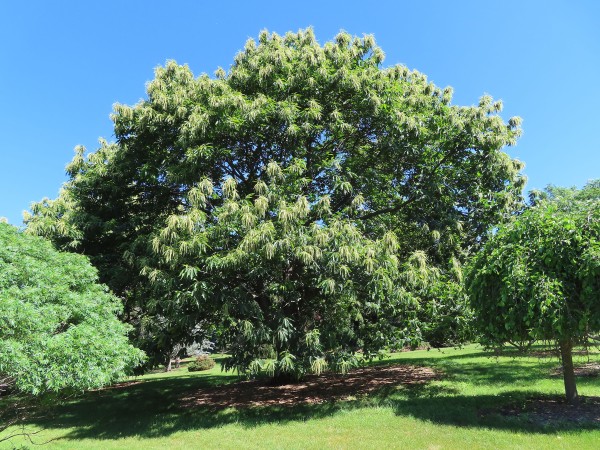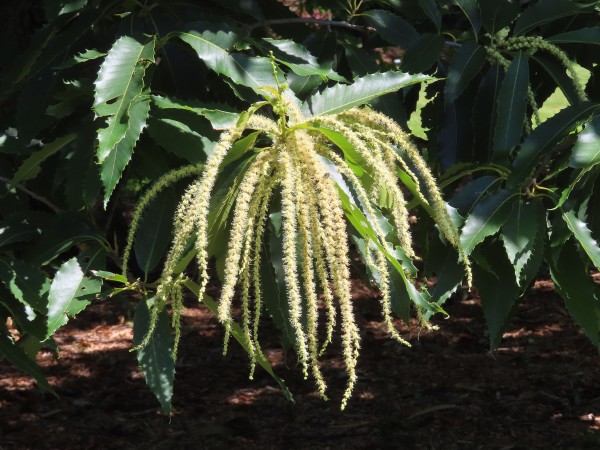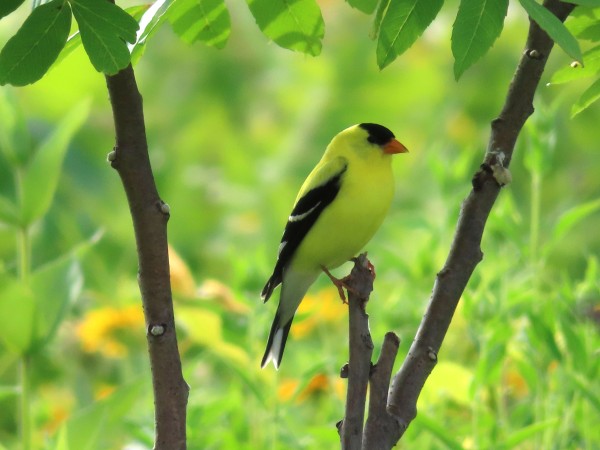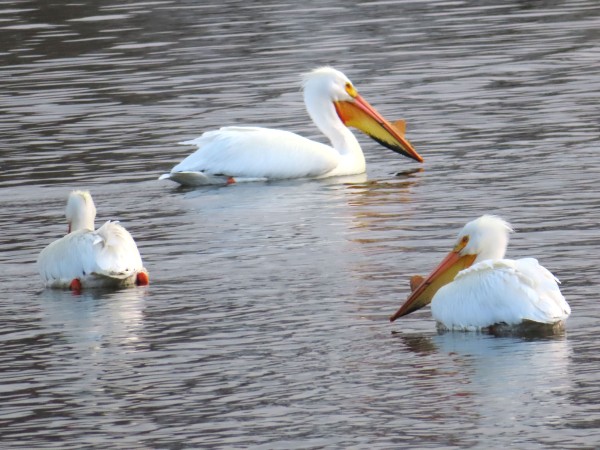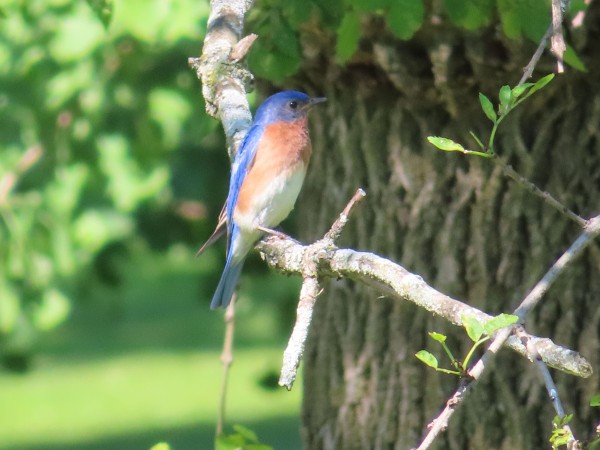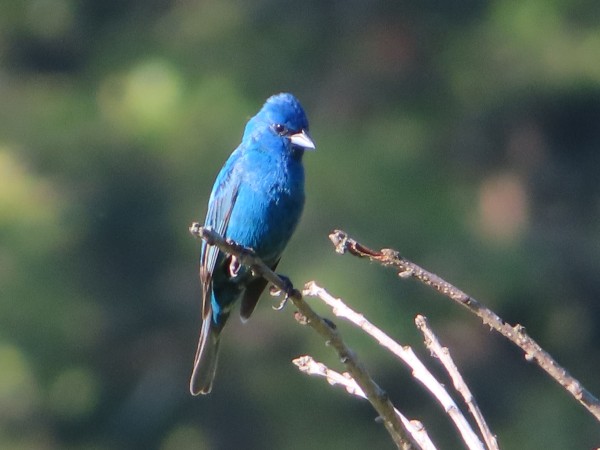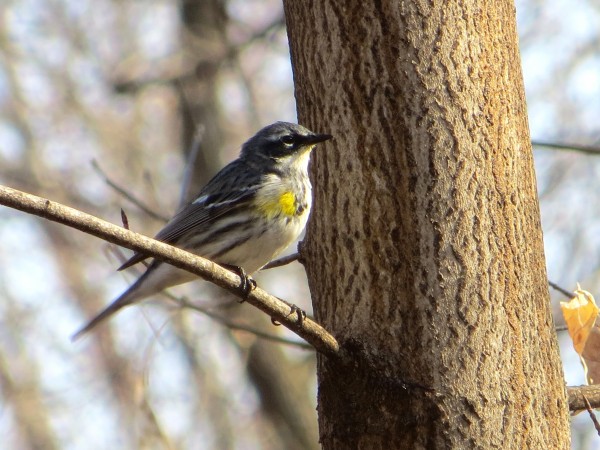Chuck's Birding Report #120
28 June - 04 July 2022
Dear fellow flock of birders,
I want to wish all of you a happy Fourth of July. I also want to let you know that the Arboretum in its own way is wishing you a happy 4th too. There are three American Chestnut Trees in the Arb just to the southwest of the Pinetum. A fungal disease killed a billion American Chestnuts that were in a forest that extended from Maine to Georgia in the early 1900s to 1940. A few were taken west before the fungal blight hit and are still alive in parts of Michigan as well as patches in Wisconsin. The Arb is lucky to have three that are alive and well. They bloom in late June and early July. Included are two photos of the American Chestnut Tree. One photo shows one whole tree covered in blooms while the other photo shows the details of one bloom. When I look at the blooms they remind me of the rockets that are set off on the 4th and explode high in the air with streams of sparks arching down. The blooms are composed of 5 to 12 catkins covered with tiny male flowers that release pollen to fertilize the females. If you look very closely at the close up photo you may be able to see a couple prickly parts at the base of the male catkins. These are the females which will develop into the prickly burrs that contain the nuts, and in the fall when mature drop to the ground. I finish this story by saying that the fireworks of American Chestnut are nice and quiet and always reminds me of having to memorize poems a hundred years ago but especially the poem by Henry Wadsworth Longfellow called The Village Blacksmith. The first line is all I remember and goes like this: Under the spreading chestnut tree the village smithy stands. I really like the quiet fourth of July wish to all of us from the American Chestnut.
I’m sure our birds this past week prefer the quietness of the American Chestnuts too. Wait until fall to see which birds will eat the nuts.
The nests under the eaves of the Visitor Center have had Barn Swallow nestlings and now are fledging and leaving the nest to learn from their parents how to find food as they fly through the air. On the path to Teal Pond I saw an adult Gray Catbird feeding two young walking on the path. I was not fast enough to capture the feeding on film but I did see the immature fledglings perched in a tree. The Baltimore Oriole nestlings in the basket-like nest hanging from a Cottonwood branch at HoNeeUm have flown away too. More and more Red Winged fledglings are making an appearance now too. The parents protect them well and can attack other birds and come close to us too to warn us to stay away from their young. I saw the heavily speckled breast and belly of a young American Robin a couple days ago. Many more should be appearing soon.
Some birds are late nesters. The American Goldfinch is a good example. I saw a female goldfinch breaking off small bits of the fine branches from last year’s wildflowers. She flew off with a beakful of these parts to construct a nest in Curtis Prairie. I didn't capture a photo of her but did see a male standing by so I photographed him instead. A photo of its brilliant yellow feathers and black accents is attached.
To continue the Fourth of July theme I thought we should include some Red, White and Blue from the bird world!
Last week Anne Marie in my group got a glimpse of a bright red bird with black wings flying by. It was definitely a Scarlet Tanager but we could not find it again. Included is a photo of a Scarlet Tanager taken some time ago in the Arb.
What can we find that is white? I immediately think of the American White Pelicans that I see occasionally fly over the Arboretum. Often they will circle around a bit in the sky letting the sun catch their turns and accentuate the white with the black wing tips. I’ve also seen a few on Lake Wingra. Included is a photo of three American White Pelicans swimming on the lake.
To choose one blue colored bird was difficult for me because there are two that are my favorites. First there are the Eastern Bluebirds that nest in the wooden bird boxes in Longenecker Gardens. A few have also nested in holes in trees on Teal Pond Marsh. The blue of the male Eastern Bluebird is outstanding. A photo of a bluebird is included. But I think the blue of the male Indigo Bunting is really spectacular. I think it’s because the blue is brilliant and covers most of its body. It also seems like we have quite a few this year again. A photo of a male Indigo Bunting is included.
So that concludes the Red, White and Blue birds for the 4th of July.
I did however see a female Indigo Bunting twice this past week. They don’t show themselves very often. In both situations the male and female were out near each other and I saw the male chase the female. The first time the male flew up into a tree while the female perched low on some wildflowers. The second time I saw the male chase the female into long grass. The male came out and flew away while the female stayed hidden in the grass. The included photo of the female Indigo Bunting shows how different its coloration is. It is more light brown to cinnamon with some subtle stripes on the breast. Interestingly the lower beak is the same gray color as that of the male.
Last Tuesday one of the groups saw both a Yellow-billed Cuckoo and a Black-billed Cuckoo down at the west end of the Visitor Center Parking Lot. I think I mentioned previously about the possibility of a Black-billed Cuckoo nest on East Curtis Prairie so seeing one by the Parking Lot is not that much of a reach. Likewise we have heard the Yellow-billed calling around the Arb occasionally. I was lucky enough to see one at the west end of the parking lot on July 1st.
I’m still seeing the Red-headed Woodpeckers in the snag at the western end of Teal Pond Marsh. I know exactly which hole they visit and crawl in and out of. I don’t know if the female is sitting on eggs inside the hole but I hope it is. The adults don’t seem to be carrying food to the hole yet. It would be great to see nestlings sticking their heads out of the hole at some point. This is a story to be continued.
I saw the Eastern Phoebe in Gallistel Woods. It was out of the nest and it had captured a butterfly. The phoebe then perched on a branch and kept banging the butterfly on the branch. I think it was going to feed it to its nestling but didn’t need the wings. It finally knocked the wings off and flew toward the nest.
All the wildflowers are bursting forth for the fourth too. We have such a great variety in the Arb. Besides wildflowers I’m seeing more butterflies, dragonflies and small toads, I call toadlings, on the trails so don’t limit your nature walks to birds. My last photo shows what happens on occasion when you put out your hand when a butterfly flies near you. I put out my hand at Icke Boardwalk and a Tawny Emperor Butterfly (?) landed on it. It stayed for a long time and probed my skin with its proboscis. Yum, yum!
That’s the Arboretum bird et al report for the past week.
I wish all of you good health and good birding too,
Chuck

